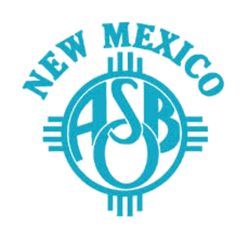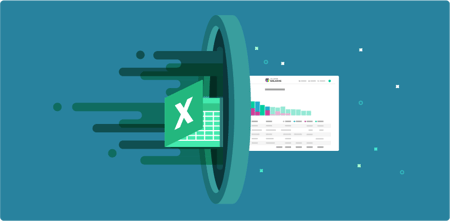1. Reform for fiscal equity and transparency—how did we get here?
2. Methodological changes to get ahead of the requirements
3. Sourcing tools suited for compliance with Martinez and Yazzie
4. Let's talk about New Mexico school finance reform—meet the team!
 Prefer to watch and learn?
Prefer to watch and learn?
Jump to the webinar replay to hear about the fiscal, policy, and legislative context for SB1, SB96, and New Mexico’s changes to school funding and accountability. In the session, we'll help you crosswalk the legislation with specific milestones to support internal compliance tracking and learn strategies for successful compliance with new milestones.
Reform for fiscal equity and transparency
How did we get here?
New Mexico is one of the latest states to have had a successful legal challenge to the adequacy of the state school funding formula. The state’s supreme court decision in the Martinez and Yazzie consolidated lawsuit required action related to educational adequacy shortcomings for high-needs students, specifically English Language Learners.
Following that decision, New Mexico enacted Senate Bills 1 & 96 to address student need (language education, education for at-risk and high-needs students) and expense reporting related to these programs and services.
Why are these bills significant?
Senate Bill 1 (SB1): A budget is a statement of goals and priorities. The requirements in SB1 attend to the alignment of resources to student need in district budget planning. SB1 grapples with the misalignment of budgeting, priorities, and school accountability goals. It requires districts to incorporate Data, Accountability, Sustainability, and High Achievement (DASH) plans into the operating budgets submitted to the state.
Senate Bill 96 (SB96): Because budgets are plans and only part of the story, SB96 addresses real spending. Reporting actual expenditures and costs is a more accurate measure of spending on programs and services for students who need more support. SB96 requires the adoption and implementation of a state-wide financial management and reporting system. It supports the redesign of a state-wide general ledger that makes school and district financial comparisons possible.
These bills require much greater fiscal transparency, particularly for dollars spent on students who require more resources to educate. This is exciting news for New Mexico communities, but districts face big challenges to achieve compliance with the new requirements. Since ERPs and Chart of Account structures do not support native solutions, the adoption of budgeting best practices along with new tools will help districts succeed.
Methodological changes to get ahead of the requirements
1. Consider Priority-Based Budgeting
New Mexico’s landmark SB1 legislation adds statutory language that requires districts to report budgeted dollars in new ways. The addition of DASH Plans and reporting of program costs for the groups and programs in these plans is new to New Mexico schools. Priority-based budgeting (PBB) can help. PBB is a collaborative budget planning process in which each personnel and non-personnel expense in a district is tied to a district goal, priority, or strategy. Districts across the nation are reshaping central office budgeting
processes with PBB in order to link district programs to strategic plans. In New Mexico, SB1 makes PBB the law of the land.
Not sure where to begin? Follow these steps to get started:
Articulate District Priorities: If you don’t already have a mission-driven, district-wide strategic plan, now is the time to construct one. Use the Data, Accountability, Sustainability, and High Achievement (DASH) Plan to identify the key priorities and accountability metrics you want to tie planned expenses (personnel and non-personnel) to, in order to achieve the accountability goals you set in the DASH Plans.
Incorporate DASH priorities into the Budget Building Process: Whether you use Excel, an ERP system, or other tools, add the district-identified priorities and strategies into your budget process. You can do this by 1) creating additional segmentation in your Chart of Accounts to include DASH goals/priorities; and/or 2) Embedding DASH priorities and strategies as independent items in your budget planning tools. During your budget building process, link each planned expense with a DASH accountability item.
Aggregate Spending into Operating Budget Hierarchies: When complete, aggregate your planned personnel and non-personnel expenses into your operating budget account hierarchies. Use the rolled up information from the Goal segment/Goal links to now include aggregate FTE and dollar amounts for each DASH priority.
2. Revise Your Chart of Accounts
While many charts of accounts include some concept of location, cost center, or school, accurate school-level expenditures require that these codes represent where resources are spent, and more specifically on what programs and services at each location. Districts that have traditionally counted school-level expenditures in large buckets titled “instruction” or “schools” must reconfigure their charts to allow spending to be tracked by each individual school location and program/service in a district’s DASH plan.
Budget and spend at the site- and program-level. This is especially important for personnel. Districts who are not tracking spending at the school-level should work with their central office team and district leadership to identify and allocate appropriate resources to support this effort. Give all budget builders/fund managers/cost centers the ability to easily access their spend data in order to inform planning decisions and more readily tie costs to planned programs and services.
Move beyond existing program codes. Update your chart of accounts to include district goals and links to programs, services, and initiatives. Even though program codes can be optional in non-categorical expense planning - use them. Program codes link expenses directly to a program/service. This makes assembling an operating budget linked to DASH plans much simpler.
Where possible, group spend and budget/account strings to specific programs. Use staffing and resource allocation models that employ clear logic and tie staff (and staff costs) and non-personnel expenses to programs and services.
Absent revision to Chart of Accounts segmentation, tagging programs/services allows budget planning that links dollars to DASH data.
Sourcing tools suited for compliance with Martinez and Yazzi
1. Ask the Right Questions
This isn’t an impossible endeavor for New Mexico and its schools. Tools exist and can support this essential work in their current form (no customization or additional spending needed!) It’s important that New Mexico districts ask the right questions to make sure that a tool under consideration can easily deliver on all requirements of the legislation.
[Get this tool!] To use the information below for use at your district, download the question set for Word.
|
When evaluating a new tool, make sure it can do this ... |
... in order to meet this legislative requirement. |
|
Does the system integrate with/use a district- or state-defined chart of accounts or are the accounting systems embedded in the system pre-defined? |
SB96: (1) be based on a standard chart of accounts that will enable comparisons between schools, between local education agencies and between SEC/SB 96 regional education cooperatives; |
|
What can the system show? (For example, can the system filter or summarize costs by site?) Is the reporting flexible or static? Does a district or state have to pay extra to unlock features? |
SB96: (2) allow for the display of administrative costs of every school site and local education agency; |
|
For whom or for what are funds budgeted? Can the system show budgeted dollars against actual spending? |
SB96: (3) make it possible to determine how school sites and local education agencies budget funds to support at-risk students, offer bilingual and multicultural educational services to students and support special education students; |
|
Which data does the system use? Is it mapped to your general ledger/chart of accounts and can it include your full transaction journal? Can those actual expenses, including salaries and benefits, be displayed by site/cost-center? Can those be rolled up, filtered, aggregated and summarized? |
SB96: (4) make it possible to determine each local education agency's and regional education cooperative's actual expenditures, which shall include actual salary expenditures and actual benefit expenditures reported by job category specified in the standard chart of accounts at the local education agency level, at the school site level and, if applicable, at the regional education cooperative level; and |
|
Can the system map to your chart of accounts and report out actual, current and historical expenditures for a given unit of analysis (e.g., school cost center, district office cost center)? |
SB96: (5) report the expenditures for each of the major categories specified in the chart of accounts for school sites and local education agencies. |
|
How do you manage and track existing spending, particularly in state-identified instruction support categories 1000, 2100, and 2200, to inform budget planning?Can you easily create custom reports to manage, track, and identify whether spending at schools and in your central office aligns with state-identified areas of interest? |
SB1: Districts and Charters will track the current level of performance and desired targets over the next three years. Districts and charter schools should submit their performance targets in the District DASH using this form for letters (a)-(e) https://webnew.ped.state.nm.us/wp-content/uploads/2019/11/Webfiles-2019-Proficiencies-All-by-Stateby- District-by-School-by-Grade.xlsx. For letters (f)-(h) districts and charters will use information from their operational budget. (f) Percent of dollars budgeted (SEG) for instructional support budget category 1000 (g) Percent of dollars budgeted (SEG) for instructional support budget category 2100 (h) Percent of dollars budgeted (SEG) for instructional support budget category 2200. |
|
Can your budget planning systems easily implement and/or update to include (and make required) program codes in order to track how budgeted dollars are spent and to make sure budgeted dollars are spent as intended and match the narrative in Educational Plans? |
SB1: In order to facilitate Operating Budget reporting in FY21, the PED is updating Supplement 3 of the Public School Accounting and Budgeting Manual of Procedures (see attached) to require school districts and charter schools use of program codes. Previously optional, these program codes are now required for Operating Budget submittals and required financial reporting (actual revenue and expenditures quarterly reports) in order to facilitate comparisons to narratives in your Education Plan. Additional updates have been made to reflect the required use of location codes for school level per-pupil expenditure (PPE) reporting required under the federal Every Student Succeeds Act. |
|
Can budget planners, be they principals, district administrators, and/or finance staff, easily identify and access newly created program codes when planning school- and district-level expenses? Do staff need to look up new codes each time a new expense is planned? |
SB1: The PED has updated the description of at-risk program services to correspond to recent statutory changes, and has made the use of such expenditure tracking and reporting mandatory. The PED also revised Supplement 3 to establish three new program codes: 4025 At-Risk Special Programs – Activities for students with special needs designed to improve their ability to learn, but funded from at-risk funding sources; 4030 K-5 Plus Programs - Activities for students enrolled in programs related to the K-5 Plus Act (22-13D-1 NMSA 1978). 4040 Extended Learning Time Programs - Activities for an extended learning time program, as described in the PED-approved Education Plan, to include expenditures for programs under 22-8-23.10 NMSA 1978 |
|
Can you manage and track dollars to ensure that resources aligned with your Education Plan are spent as intended? Can you manage and track dollars at the transaction level using sub account codes or custom tags? |
SB1: PED is looking to compare Operational sub fund expenditures tracked under the At-risk (4020) program codes to the narrative in the education plan to allow verification of expenditures for research-based or evidence-based social, emotional or academic interventions and services such as: (1) case management, tutoring, reading interventions and after-school programs that are delivered by social workers, counselors, teachers or other professional staff; (2) culturally relevant professional and curriculum development, including those necessary to support language acquisition, bilingual and multicultural education; (3) additional compensation strategies for high-need schools; (4) whole school interventions, including school-based health centers and community schools; (5) educational programming intended to improve career and college readiness of at-risk students, including dual or concurrent enrollment, career and technical education, guidance counseling services and coordination with post-secondary institutions; and (6) services to engage and support parents and families in the education of students. |

Webinar Replay: Hatching a Budget Plan:
New Mexico’s New Requirements from Yazzie-Martinez
Presented through a partnership with NMASBO
The changing school district fiscal policy landscape in New Mexico is rooted in state-level adequacy legislation. This session explores the policy context that spurred the enactment of Senate Bills 1 and 96, maps the new statutory requirements to school district milestones, and provides strategies to accomplish those milestones. Viewers will better understand their roles and responsibilities in meeting new requirements, as well as explore the expanding role of the school business office in linking school- and district -level strategic planning to the resources and inputs necessary to meet those district outcome goals.
2. Get to Know Allovue
Allovue supports K-12 school districts with tools to budget, manage, and evaluate district spending. We were founded with a singular focus on equitable resource allocation to better support the needs of students. Alignment of spending to goals and transparency are core beliefs that have been baked into our software. That's why it seems we were practically made for this time of school finance reform in New Mexico!
Allovue enables districts to comply with the Martinez and Yazzie consolidated lawsuit requirements for fiscal transparency. No Chart of Account or ERP changes required. Balance integrates with any existing school finance system and provides out-of-the-box functionality and flexible reporting to build Educational Plans required by the New Mexico PED.
Three ways New Mexico districts can benefit from Allovue—see it in action:
1. Use tags for Operation Sub-fund codes
SB1 requires detailed spending that can be difficult to show if your Chart of Accounts doesn't include Operation Sub-fund codes. With Allovue's transaction tagging, districts can monitor custom metrics to meet the requirements of SB1 without having to modify the existing Chart of Accounts.
Transaction tags can play the role of sub-program codes that may not exist in your Chart of Accounts. Filter transactions by segment (i.e. At Risk Programs) and within segments (i.e. Social Workers). Apply tags to represent sub-program codes (i.e. Case Management). View and track tags by using filters, creating bookmarks, or exporting data for external reporting requirements.
2. Build a budget aligned to program codes
SB1 requires districts to use the previously optional Program codes to track how budgeted dollars are spent, and to make sure those dollars are spent as planned in the Education Plan Narratives. With Allovue, it's easy to build a budget aligned to program codes and strategic priorities.
Districts can require specific Chart of Account segments to be populated for regulatory compliance. Drill down to planned expenses (i.e. Books and Periodicals from the General Fund) to view the associations. Expenses can be tied to the program code, function, subject, and other COA segments. What's more, expenses can also be linked to strategic priorities (i.e. STEAM focus).
3. See budgeted and spent dollars at schools
NM SB96 requires districts to report budgeted dollars and actualized costs of all school sites to New Mexico PED. Using charts in Balance, districts can effortlessly compare budgeted and spent dollars for particular student populations by site—without changing their ERPs.
Site-level budgeting and actualized costs are easy to visualize with charts. View summaries by location and drill deeper for totals at school sites. Use charts to see who dollars are for by selecting a non-financial metric (i.e. English Language Learners). Charts display budgeted dollars and actualized costs for a particular population of students at school sites.

“Allovue effectively translates the complexities of financial statements into meaningful, understandable data points that empower administrators to appropriately allocate resources that maximizes student achievement.”
- Chief Financial Officer at 11,800 student district
ERPs and Chart of Account structures are not built to comply with New Mexico's fiscal transparency requirements that arose from the Martinez and Yazzie consolidated lawsuit. Allovue works alongside your current tools to take the burden out of compliance so that your district can focus on the strategy that fuels resource equity.
Let's talk about New Mexico school finance reform!

Would you like to learn more? Set-up a meeting to introduce your district, review your readiness for Martinez and Yazzie requirements, and explore Allovue as a solution for regulatory compliance.
Meghan Stanton, Account Advisor

ABOUT THE AUTHOR
Allovue works with districts and state departments of education across the country to allocate, budget, and manage spending. Allovue's software suite integrates seamlessly with existing accounting systems to make sure every dollar works for every student. Allovue also provides additional services such as chart of accounts and funding formula revisions.


